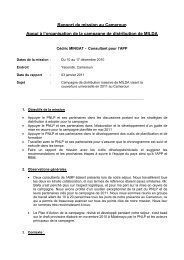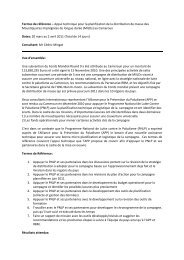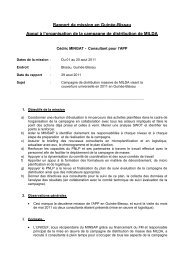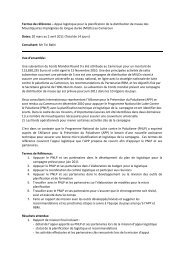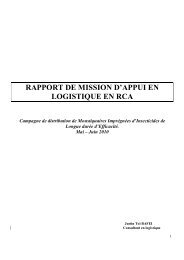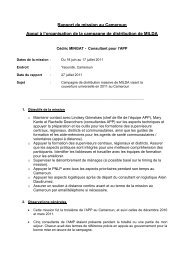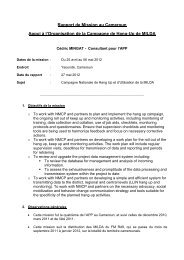Spots - Roll Back Malaria
Spots - Roll Back Malaria
Spots - Roll Back Malaria
- No tags were found...
You also want an ePaper? Increase the reach of your titles
YUMPU automatically turns print PDFs into web optimized ePapers that Google loves.
STEP 2: DEVELOP THE CREATIVE BRIEFBUILDING ON BENEFITS AND BREAKING BARRIERSHow to encourage your audience to take the desired actionWhat you ask your target audience to do in your radio spots will depend on whatthey are currently doing and why they are not performing the behaviors you want topromote. Once you have selected your target audience, you will need to refer toexisting research or research you have conducted to understand what they arecurrently doing in relation to malaria prevention and treatment and why.People usually have good reasons for behaving as they do. It is important to note thatit is not always clear to us why people do or do not do something. From theavailable data, you should be able to determine the main barriers (obstacles) to theaudience's adopting the desired behavior. Barriers can be beliefs, cultural practices,peer pressure, misinformation or other factors. The audience itself may not be ableto explain or recognize what the barriers are, but you should be able to determinethem from the data and/or from people whoknow the audience well.Barriers keep people from acting. But peoplewill take an action when they perceive it tobenefit them, even if it is not the consequencethat we are hoping they find. Therefore, yourspot must convey through your message abenefit related to the new behavior that willpersuade your target audience to overcome itsresistance to that behavior/action.When you listen to your radio spot, it should be clear why your target audienceshould do what it is asking and what one key benefit/promise it will bring them.The principal differences between informational and persuasive radio materials:• Informational materials present facts and may raise awareness, but they rarely havean impact on people's behavior.• Materials that persuade people to change their behaviors emphasize the benefitsof doing that behavior.In selecting the benefit to promote, remember that it is the audience’s viewpointthat matters. Too often, program managers become so focused on the public healthbenefit that they forget they are not audience members—and what families careabout and what motivates them may have little to do with public health priorities.For example, a common reason people give for using treated mosquito nets is thatthey sleep better because they are not bothered by mosquitoes or other insects.This is not a direct health benefit, but it can be used to promote use of treatedmosquito nets, which will result in a health benefit.Spot On <strong>Malaria</strong>: Guide31




